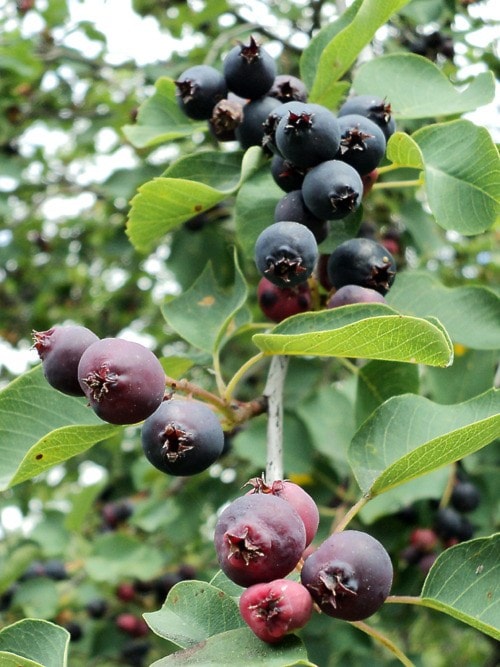The North Thompson region is known for its berries, and Clearwater is in the heart of it. The types of berries growing in this region are too numerous to name, but some favorites are soapberries, Saskatoon berries and wild strawberries. What I personally love about harvesting wild food is that it grows 100 per cent naturally and organically, is free to collect and is a great reason to get outside and on the land. Harvesting food is also a great way to learn about the beneficial health effects of different plants, historical uses by First Nations and early settlers, as well as the stories and myths associated with each plant.
One very basic thing to know about berries is that they are very high in antioxidants. All dark red, purple and blue fruits are. Antioxidants have been discovered to reduce age-associated oxidative stress and possess anti-inflammatory properties. Oxidative stress is stress on the body that is caused by the damage done by free radicals. Free radicals are especially reactive atoms or group of atoms found in things like tobacco smoke, toxins, or pollutants that can damage cells, proteins, and DNA by altering their chemical structure. So when you are out hiking, munch away!
Soapberry (Shepherdia canadensis):
While not the sweetest berry, soapberry or soopolallie berries have been used to treat the flu and indigestion, and as a tea, for relieving constipation. However, with all herbal medicine there are limits, what makes these berries bitter is a soapy substance called saponin that can cause diarrhea, vomiting and cramps if taken in large quantities. However, this isn’t anything to be too concerned about because their bitter flavor would likely prevent anyone from eating too many of them at one time.
Soapberries can be used fresh or canned to make “Indian ice-cream”. Put a handful of berries into a bowl; add a little water and a dash of sugar or other sweetener (1/4 cup water to one cup fresh or two tablespoons dried or canned berries). Then mix or swish them up until they foam into a salmon-colored froth. Make sure there is no fat or oil residue in the bowl, or the berries will not foam up.
Saskatoon berries (Amelanchier alnifolia):
In addition to their antioxidant affects, Saskatoons are an excellent source of manganese, magnesium, iron, calcium, potassium, copper and carotene. Saskatoons can be considered a better source of calcium than red meats, vegetables and cereals and are an excellent source of iron! Make sure that you pick the Saskatoons early, they seem to only be juicy for a short window and then start to dry up a little right on the plant and become a little bit grainy.
Aboriginal peoples used, and still use, other parts of the Saskatoon bush as well. The leaves and fruit are dried and used to make tea. The wood of the bush itself is heavy and flexible and useful in arrows and other tools, basket frames and crosspieces of canoes. Many parts of the shrub are used to prepare medicines.
Strawberry (Fragaria virginiana):
The wild strawberry is so small in size and somewhat small in range that most people pick them to snack on and don’t harvest them in a serious way for jam-making etc. They have some of the most interesting stories associated with them to keep in mind when enjoying their delicious flavor. For example, superstitious Michigan farmers never ate the first strawberry to ripen, because it would show the plant that making lots of fruit was no use. So they would throw the first strawberry to the birds. This goes back to the pagan show of respect for the nature spirits, and also reflects traditional First Nations harvesting practices to always leave berries for the wildlife.
Bavarian peasants tied baskets of strawberries to their cattle’s horns so elves could enjoy the fruit at night, and return the favor by magically using their magic to make the peasants prosperous.
So whether you are enjoying berries for their taste, their health benefits or as an excuse to spend time outside- please don’t forget to leave some for the birds, bears, your fellow pickers and the even the elves if you so wish.
- SFU student Samantha Charlton is researching non-timber forest products in this area in cooperation with Wells Gray Community Forest and Simpcw First Nation
